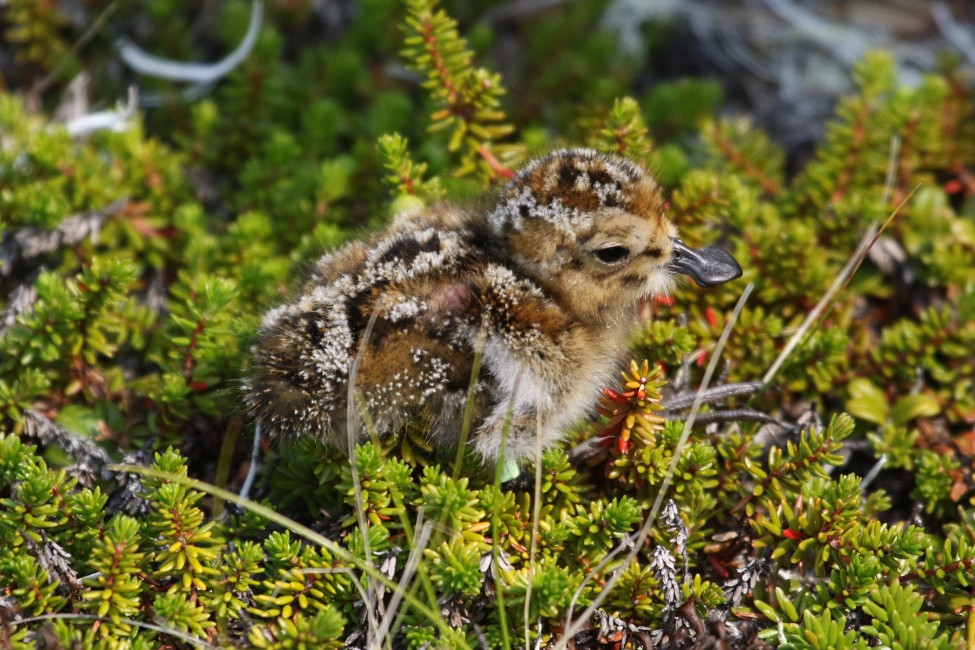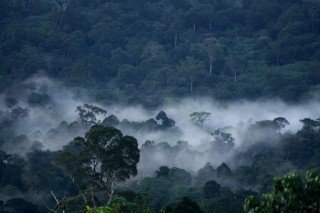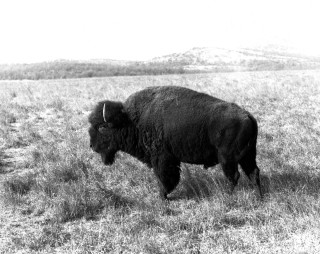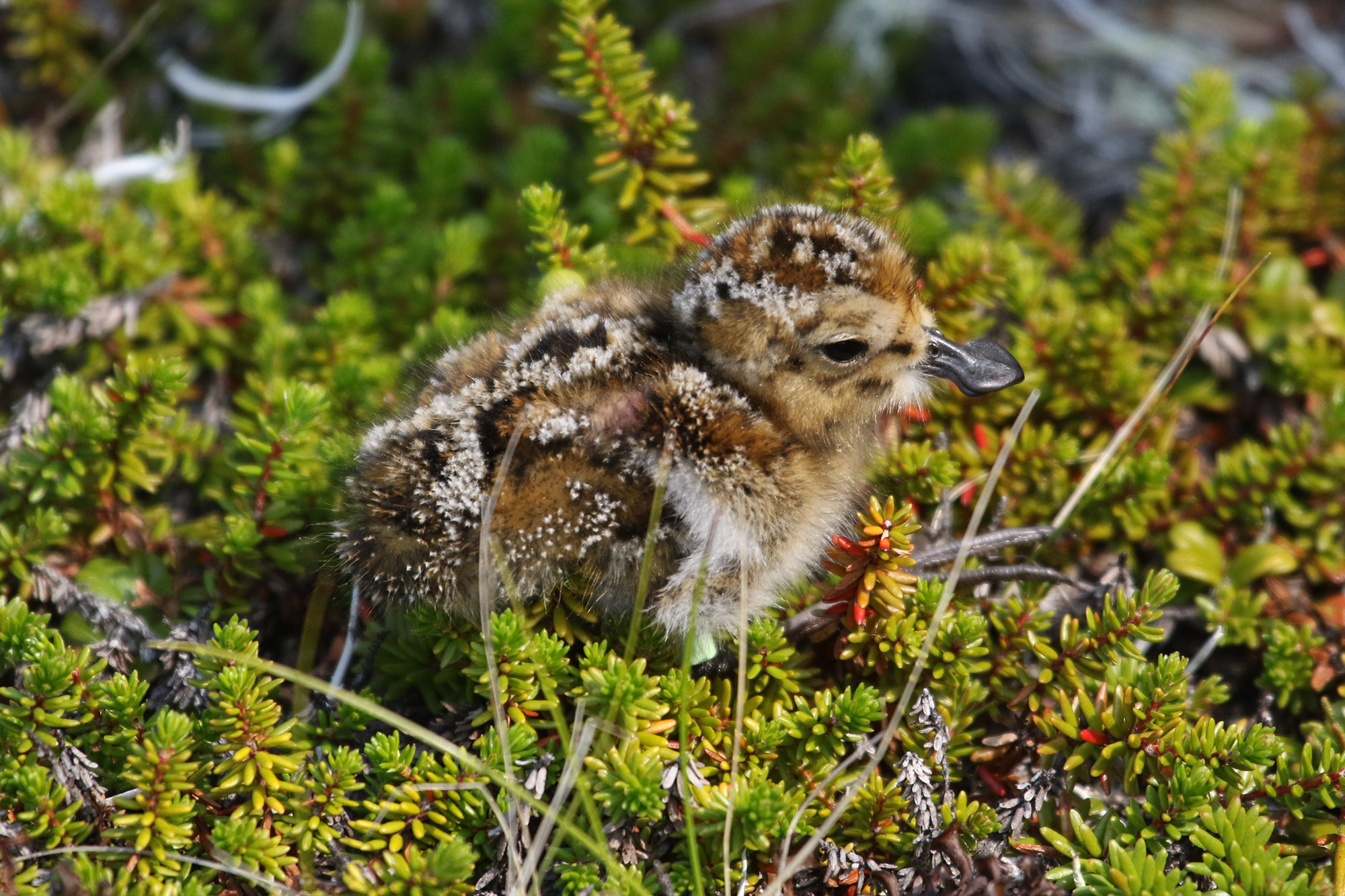
October 11, 2019
A Fluff of Hope
- as seen by -
 Jonathan C. Slaght
@JonathanSlaght
Jonathan C. Slaght
@JonathanSlaght A spoon-billed sandpiper chick (Calidris pygmaea) sits immobile, hoping to remain unnoticed. Even at only a few days old, and the size of a tangerine, this bird knows the tundra is a dangerous place. It would make a great snack for a fox, raven, ground squirrel, or other creature patrolling the Russian Arctic.
Summers in Chukotka, the site of nearly all known nesting locations of these birds, are short. If this chick survives it will soon be unrecognizable. In what must be a bewildering four weeks it will grow almost exponentially, develop flight feathers, and be ready to abandon this place before the early autumn frosts breathe warning of colder days to come. It will submit to some innate yearning to head south, far south, wintering nearly 5300 miles away along coastal mudflats of southern Asia.
Survival of this one chick is important, as spoon-billed sandpipers are among the rarest birds on Earth. Their population crashed from about 1000 pairs in 2000 to only 100-200 pairs today, a crisis largely driven by loss of habitat and bird hunting in southern Asia. Conservation efforts are ongoing there to mitigate these issues; some with great success. In the north, Russian conservationists are doing their part by keeping tabs on breeding sites and banding any bird they can catch to track survival. They also bolster the breeding population by raising some chicks in captivity then releasing them into the wild to migrate south on their own.
With luck, we’ll see this bird some future spring, perhaps chittering nervously nearby as researchers search for its chicks, hidden among the tundra vegetation.
Canon 7D Mark II




Leave a Comment
Ning
February 5, 2021 at 8:38 pm
I enjoyed reading Owls of the Eastern Ice tremendously.
Thank you for your beautiful and insightful description of the Blakiston’s fish owl 🦉